NEET Biology Notes For Reproductive Health Introduction
- According to the World Health Organization (WHO), reproductive health means total well-being in all aspects of reproduction, i.e., physical, emotional, social, and behavioral.
- Thus, a society with people who have physically and functionally normal reproductive organs and normal emotional and behavioral interactions among them in all sex-related aspects may be called reproductively healthy.
NEET Biology Notes For Reproductive Health: Problems And Strategies
The problems and strategies of reproductive health in human beings are explained as follows:
- Over-population
- The main problem of India is its excess population, which is directly connected with reproductive health.
- To achieve total reproductive health, some plans and programs were started.
- Family planning program was initiated in 1951 and was periodically assessed.
- These programs were popularly named Reproductive and Child Healthcare (RCH).
- The major tasks carried out under these programs are providing facilities and support for building up a reproductive healthy society.
- Awareness about reproduction
- Audio-visual and print media and government and non-government agencies are doing a good job in creating awareness among people about re- production in humans.
- Parents, close relatives, friends, and teachers also have a major role in giving the above information.
- Sex education
Sex education in schools also should be introduced and encouraged to provide right information about myths and misconceptions regarding sex-related aspects. - Knowledge of growth of reproductive organs and sexually transmitted diseases (STDs)
Proper information about reproductive organs; adolescence (period of rapid growth between childhood and adulthood); safe and hygienic sexual practices; STDs, e.g., AIDS; etc., would help to lead a reproductive healthy life. - Birth-control devices and care of mother and child (pre-natal, natal, and post-natal care)
- Fertile couples and people of marriageable age- group should know about available birth control devices, care of pregnant mothers, post-natal (after birth) care of the mother and child, importance of breast feeding, equal importance for the male and female child, etc.
- Prevention of sex abuse and sex-related crime
Awareness of problems due to uncontrolled population growth, social evils such as sex abuse and sex-related crimes needs to be created so that people think and take up necessary steps to prevent them and, thereby, build up a reproductively healthy society. - Information about reproduction-related problems
- For successful action plans to attain reproductive health, we require good infrastructural facilities, professional expert knowledge, and material support.
- These are necessary to provide medical help and care for reproduction-related problems such as menstrual problems, infertility, pregnancy, delivery, contraception, abortions, and STDs.
- Implementation of better techniques and new strategies is also required to provide better care and help to people for reproductive health.
- Amniocentesis Meaning and use
Amniocentesis is a fetal sex determination and disorder test based on the chromosomal pattern in the amniotic fluid surrounding the developing embryo.
Procedure- Amniotic fluid contains cells from the skin of the fetus and other sources.
- These cells can be used to determine the sex of the infant, to identify some abnormalities in the number of chromosomes, and to detect certain biochemicals and enzymatic abnormalities.
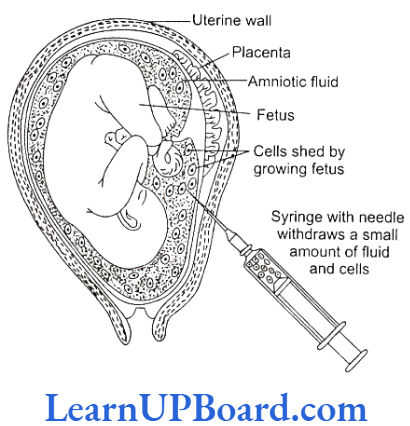
- If it is established that the child is likely to suffer from a serious incurable congenital defect, the mother should get the fetus aborted.
- Misuse of amniocentesis: It is being used to kill normal female fetus. Female feticide is illegal.
- Research in reproductive health area
- It should be encouraged and supported to find out new methods.
- “Saheli,” a new oral contraceptive for females, was developed by our scientists at the Central Drug Research Institute (CDRI) in Lucknow, In- dia.
- Medical facilities
Better awareness about sex-related problems, pre-natal care of mother, medically assisted deliveries, and post-natal care of mother and infant decrease maternal and infant mortality. Small families, better detection and cure of STDs, and increased medical facilities for sex-related problems, etc., indicate improved reproductive health of male and female adults and children.
Read and Learn More NEET Biology Notes
NEET Biology Notes For Reproductive Health Measures To Control Over-Population
- Education
- People, particularly those in the reproductive age- group, should be educated about the advantages of a small family.
- Mass media and educational institutions can play an important role in this campaign.
- Posters showing a happy couple and two children with a slogan “Hum Do Humare Do” should be displayed. (Many couples have even adopted “one child norm.”)
- Marriageable age
Raising the age of marriage is a more effective means to control the population. (Now the marriageable age of females is 18 years and that of males is 21 years.) - Incentives: Couples with small families should be given incentives.
- Family planning: There are many birth control measures which can check birth rate.
NEET Biology Notes For Reproductive Health Population Explosion And Birth Control
- Rapid increase in population over a relatively short period is called population explosion.
- Census gives information about the number of individuals present in a given region at a given time.
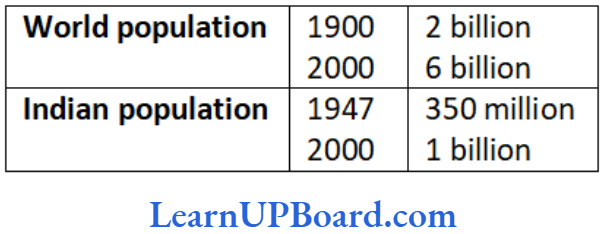
- It means every sixth person in the world is an Indian.
- The time required for a population to double itself is called doubling time.
- The present growth rate of approximately 1.6% per year for India is smaller than the peak of about 2.1% per year during 1965-1970.
- Population growth rate is indicated by (a) the annual average growth rate and (b) the doubling time.
- Growth rate depends on birth (fertility) rate, death (mortality) rate, migration, and age-sex ratio.
- The major reasons for this growth are as follows:
- A rapid decline in death rate.
- A decline in maternal mortality rate (MMR).
- A decline in infant mortality rate (IMR).
- Increase in the number of people reaching reproducible age.
NEET Biology Notes For Reproductive Health Birth Control
Birth control is the process to prevent conception or pregnancy without interfering with the reproductive health of individuals.
- The characteristics of an ideal contraceptive are that it is (a) user friendly, i.e., comfortable and easy to use, (b) without side-effects, (c) reversible, and (d) completely effective against pregnancy.
- There are several methods of contraception-natural or traditional methods, barriers, IUDs, oral contraceptives, injectables, implants, and surgical methods.
- Couple protection is the process of bringing eligible couples under family planning measures. In India, it is over 55% at present and is voluntary in nature.
- In 2004, there were 60.79 lakh IUD insertions, 48.74 lakh sterilizations, 249.9 lakh condom users, and 87.54 lakh oral pill users.
NEET Biology Notes For Reproductive Health Methods Of Birth Control
- Natural methods
- These are methods which do not require any device or medicine. So, there are no side-effects; but the chances of failure are very high.
- Natural methods are of three kinds-safe period, withdrawal, and breast feeding.
- Safe period (rhythm method)
- Ovalation occurs roughly about the middle of menstrual cycle.
- Fertility period is up to 48 h after ovulation, when fertilization can occur.
- Avoiding sex during the fertility period will naturally prevent conception.
- Ovulation period can be known by the rise in body temperature by about 1°F; cervical mucus is slippery and can be drawn into a thread (Spinnbarkeit test) when stretched between two fingers.
- Period prior to ovulation is safe.
- Period after the fourth day of rise in body temperature (or last positive Spinnbarkeit test) is also considered safe.
- It is, however, always better to avoid sex from day 10-17 of the menstrual cycle.
- Withdrawal method (coitus interruptus)
- The method is based on the withdrawal of penis from the vagina before ejaculation.
- This method has high failure rate due to pre-ejaculatory release of sperms or failure to withdraw penis from the vagina before ejaculation.
- Lactational amenorrhea
- Just after parturition, there is a phase of amenorrhea or absence of menstruation.
- It is also the phase of intense lactation.
- Breast feeding the child fully prevents conception.
- The method is, however, effective only up to a maximum period of 6 months.
- Safe period (rhythm method)
- Barrier methods
- These are mechanical devices which prevent the deposition of sperms into vagina and their pas sage into the uterus.
- Further, they can be self-inserted by the user in complete privacy.
- The common barrier methods are condoms, diaphragm, fem shield, and cervical cap.
- Condom
- It is a tubular latex sheath which is rolled over the male copulatory organ during sex.
- The common brand provided by family welfare services is Nirodh.
- It also provides protection against STDs including AIDS.
- Condom

- Fem shield (female condom)
- The device is a polyurethane pouch with a ring at either end.
- The inner ring is smaller and present at the inner closed end.
- The device covers the external genitalia as well as the lines the vagina.
- Fem shield provides protection from STDs also.
- Fem shield (female condom)
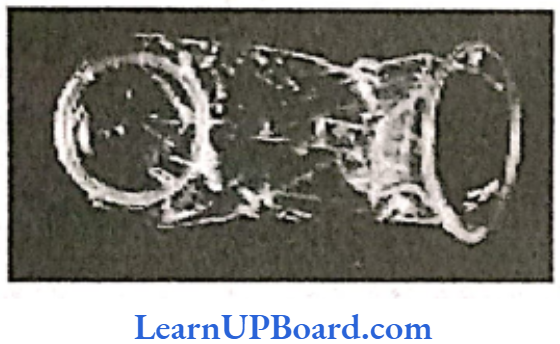
- Diaphragm
It is a tubular rubber sheath with a flexible metal or spring ring at the margin which is fitted inside the vagina. - Cervical cap
- It is a rubber nipple which is fitted over the cervix and is designed to remain there by suction.
- The device prevents the entry of sperms into the uterus.
- Diaphragm
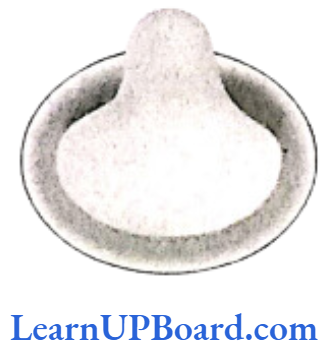
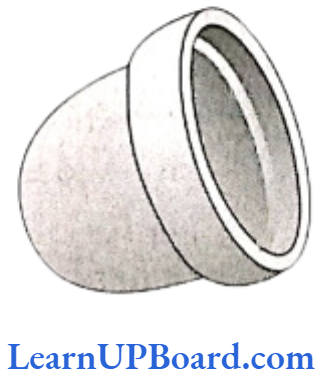
- Vault cap
It is a hemispheric dome-like rubber or plastic cap with a thick rim which is meant for fitting over the vaginal vault over the cervix.
- Vault cap
- Chemical methods
- These are contraceptives which contain spermicidal chemicals.
- Chemical contraceptives are available in the form of creams (e.g., delfen), jelly (e.g., perceptin, volpar paste), foam tablets (e.g., aerosol foam, chlorimin T or contab), etc.
- These commonly contain lactic acid, boric acid, citric acid, zinc sulfate, and potassium permanganate.
- The contraceptives are introduced in the vagina prior to sex.
- Sponge (today) is a foam suppository or tablet containing nonoxynol-9 as spermicide. It kills the sperm by disrupting the membrane. It is moistened before use to activate the spermicide. The device also absorbs the male ejaculate.
- Intra-uterine devices or IUDs (intra-uterine contraceptive devices or IUCDs)
- These devices are inserted by doctors or expert nurses in the uterus through vagina. IUDs affect the motility of sperms within the uterus. IUDs can be
- Non-medicated (e.g., Lippes loop)
- Copper releasing (e.g., CuT, Cu7, and Multi- load 375): The copper ions suppress the motility and fertilization capacity of sperms.
- These devices are inserted by doctors or expert nurses in the uterus through vagina. IUDs affect the motility of sperms within the uterus. IUDs can be
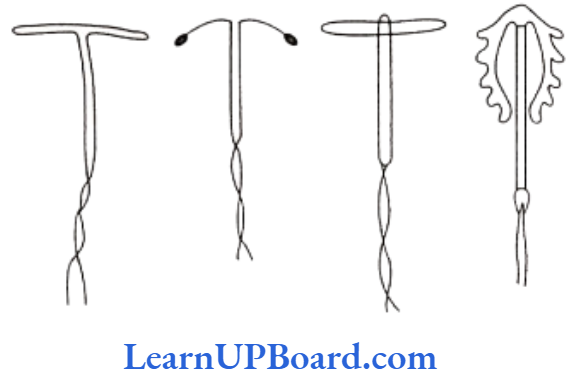
- Hormone releasing (e.g., Progestasert and LNG-20)
- Hormone releasing IUDs, in addition, make the uterus unsuitable for implantation and the cervix hostile to sperms.
- IUDs are ideal contraceptives for females who want to delay pregnancy and/or space children. It is one of the most widely accepted methods of contraception in India.
- Hormone releasing (e.g., Progestasert and LNG-20)
- Oral contraceptives (oral pills)
- Oral contraceptives are preparations containing either progestin (progestogen or progesterone) alone or a combination of progestogen and oestrogen (estrogen).
- The pills are taken orally for 21 days in a menstrual cycle starting from the 5th day and ending on the 25th day.
- However, it is advisable to restart the course after a gap of 7 days irrespective of the onset or non-set of menstruation during the pill-free days.
- When a pill is missed, it should be taken when- ever one remembers, sometimes two at a time.
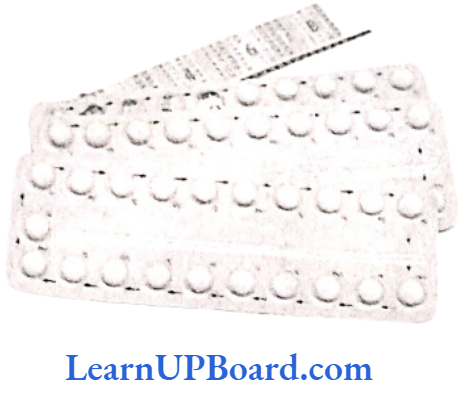
- This helps in keeping the hormonal level optimum for contraception.
- Hormonal pills act in the following four ways:
- Inhibition of ovulation.
- Alternation in uterine endometrium to make it unsuitable for implantation.
- Changes in cervical mucus impairing its ability to allow the passage and transport of sperms.
- Inhibition of motility and secretory activity of fallopian tubes.
- Oral pills are of two types: combined and minipills.
- Combined pills contain both oestrogen and progestin.
- These are synthetic products.
- Oestrogen is an ovulatory that inhibits FSH production. Progestin is anovulatory that inhibits LH production.
- It protects the endometrial lining from the adverse effect of oestrogen.
- The hormone also changes cervical mucus.
- The most commonly used progestin is levonorgestrel or desogestrel.
- The most common oestrogen is ethinyl oestradiol or menstranol.
- In monophasic combined pills, both oestrogen and progestin are present in nearly the same amount, e.g., Mala D and Mala L.
- In multiphasic combined pills, oestrogen is maintained at the same level throughout the 21-day course (0.03 mg) but the amount of progestin is increased (0.05 mg for the first six days, 0.075 mg for the next five days, and 0.125 mg for the last ten days), e.g., triquilar and orthonovum.
- Minipills are progestin pills only (with no estrogen). They are taken daily without break.
- Saheli-a non-steroidal preparation-is taken once a week after an initial intake of twice a week dose for 3 months.
- Injectable contraceptives (Depo-Provara)
- Two types of progestin preparations are used singly: Depot-medroxy progesterone acetate (DMPA) 150 mg every 3 months or 300 mg every 6 months and norethisterone enanthate (NET EN) 200 mg every 2 months.
- Cyclofem and mesigna are combined injectable contraceptives which are given once every month.
- They contain progestin preparation as well as oestradiol.
- Implants
- These are hormone containing devices which are implanted subdermally for providing long-term contraception.
- Norplant is progestin only. The device comes with six small permeable capsules (34 mm × 2.4 mm each) with about 36 mg levonorgestrel.
- These are inserted under the skin in a fan-shaped manner inside the upper arm or forearm through a small incision.
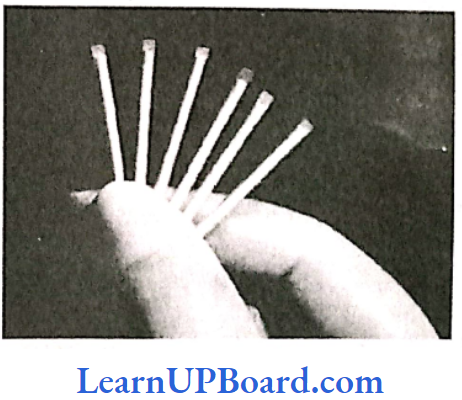
- Suturing is not required. Norplant remains effective for about 5 years.
- Implanon is a single rod-like device which is implanted through a wide bored needle. It contains 3-keto desogestrel. It remains functional for three years.
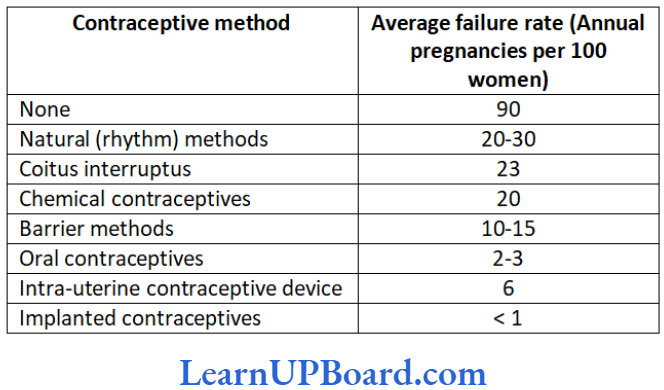
- Emergency contraception
- It is the treatment for unprotected sex, sexual assault, missed pills, and other reasons which have a risk of pregnancy.
- The drugs used for treating emergency contraceptions are called morning-after pills.
- These are available in India under the Family Welfare Program since 2002-2003.
- Two oral tablets to start and two tablets after 12 h provide relief.
- Other morning-after pills are noral, norgynon, and ovidon.
- An antiprogesterone pill (mifepristone) is a single-pill treatment.
- Insertion of IUD within 5 days of unprotected sex prevents implantation.
- Surgical methods of family planning
- Surgical methods are permanent methods of family planning where there is no need of replacement or augmentation but the reversibility is poor.
- These are also called the terminal methods of family planning.
- The methods are operative procedures which block the passage of semen in males and that of ova in females.
- The techniques are also called sterilization procedures.
- These are called vasectomy in males and tubectomy in females.
- Vasectomy (L. vas-vessel, ektome-excision)
- It is a surgical method of sterilization of males.
- Vasa deferentia are blocked by cutting and occluding them so that sperms are
- Conventional vasectomy (scalpel surgery):
- Under local anesthesia, transverse 1 cm incision is made through the skin of the scrotum with the help of the scalpel over the area of vasa deferentia.
- Vasectomy (L. vas-vessel, ektome-excision)
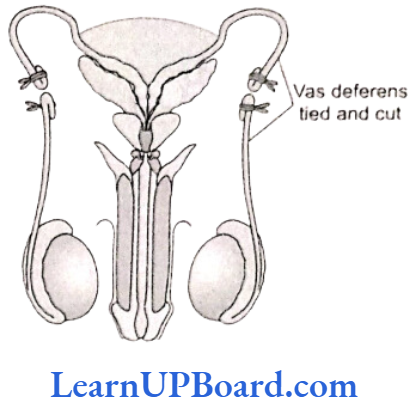
- Each vas deferens is exposed and cut.
- The two ends are separated and tied.
- A gap of 1-4 cm is must between the two ends; otherwise reunion can occur.
- No-scalpel vasectomy
- Here, instead of scalpel, dissecting forceps and ringed forceps are required.
- The skin is punctured and the vas deferens is taken out.
- It is occluded by removal of 1-2 cm followed by ligation of ends.
- Occlusion can also be achieved by heat and clips.
- Vasectomy is a reversible procedure as the cut ends can be joined together to open to sperm passage.
- Tubectomy (L. tubes-pipe, ektome-excision)
- It is a surgical procedure of female sterilization where a portion of both the fallopian tubes is excised or ligated to block the passage of ovum through them. Tubectomy is performed by conventional transabdominal surgery, conventional laparotomy, and minilaparotomy.
- In surgical procedures, the fallopian tubes are cut and the cut ends are tied to prevent reunion.
- The procedure is reversible as the cut ends can be rejoined.
- In laparoscopic procedure, sterlization is achieved by loop development and constricting the basal region of loop with the help of elastic ring either through a small incision in the abdomen or through the vagina.
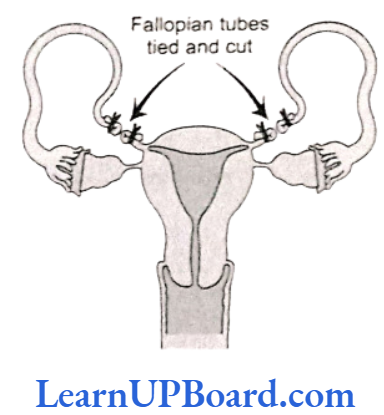
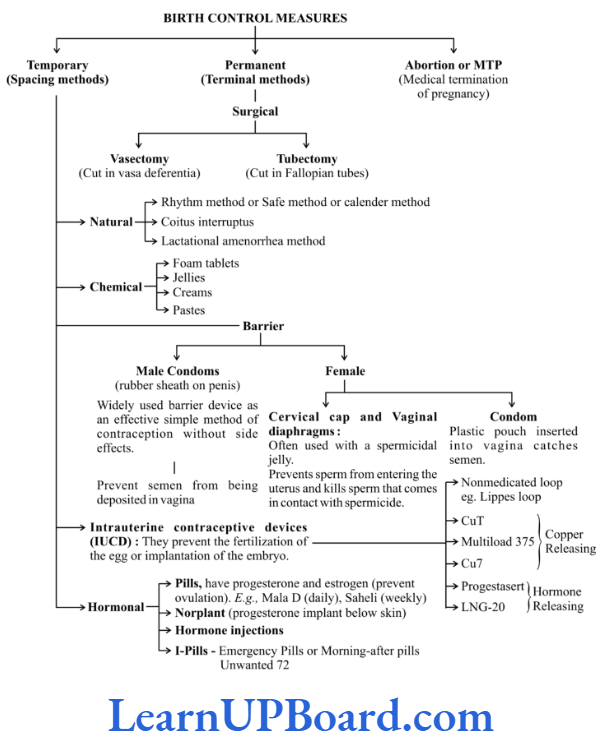
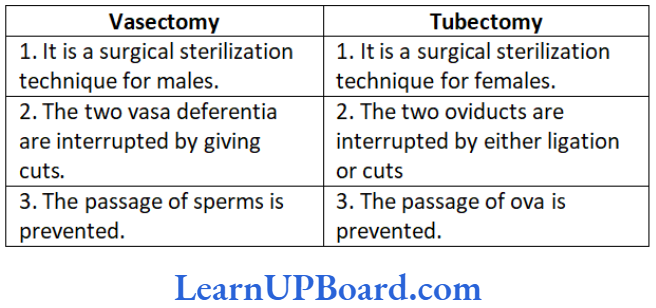
Medical Termination of Pregnancy
- Medical termination of pregnancy (MTP) is voluntary or intentional abortion induced and performed to end pregnancy before the completion of full term.
- Worldwide, nearly 20% of the total pregnancies get aborted.
- The number of MTPs is 40-50 million/year.
- Therefore, MTPs play a significant role in the containment of population though these are not performed for this purpose.
- These are mainly meant for removing unsustainable pregnancies.
- Many countries do not have a law about MTPs because the latter involve emotional, ethical, religious, and social issues.
- However, in India, there is a proper act-Medical Termination of Pregnancy Act, 1971.
- It is mainly meant for preventing unnatural maternal deaths due to unsafe abortions (which is 8.9% of the total maternal deaths).
- The act has been amended in 2002.
- Under this act, the termination of pregnancy can be done up to 20 weeks, if pregnancy is likely to produce a congenitally malformed child, is a result of rape and contraceptive failure, or is likely to harm the mother.
- MTP is safe if it is performed up to 12 weeks (first trimester) of pregnancy.
- Misoprostol (prostaglandin) along with mifepristone (antiprogesterone) is an effective combination.
- Vacuum aspiration and surgical procedures are adopted thereafter.
- Abortions in the second trimester are risky.
- These are generally performed after testing the sex of the baby through amniocentesis or sonography.
- This has resulted in large-scale female feticide and complications due to unsafe abortions in the hands of untrained persons.
- To prevent such happening, the government has enacted a law-Prenatal Diagnostic Techniques (Regulation and Prevention of Misuse) Act, 1994-with amendments in 2003.
- It prohibits preconception and prenatal sex determination.
STDs
- The general term STD is applied to any of the large group of diseases that can be spread by sexual contact.
- The group includes conditions traditionally specified as venereal diseases (VD), such as chlamydia, gonorrhea, syphilis, and genital herpes.
- AIDS and hepatitis, which are STDs, can be contracted in other ways also.

NEET Biology Notes For Reproductive Health Infertility
- Infertility (L. in-not, fertilis-fruitful) is failure to conceive even after 1-2 years of regular unprotected sex.
- The term is not a synonym of sterility which means complete inability to produce an offspring.
- Infertility can best be defined as relative sterility.
- It is of two types: primary and secondary.
- Primary infertility is the infertility found in patients who have never conceived.
- Secondary infertility is the infertility found in patients who have previously conceived.
- Infertility is caused by defects found in males, females, and in both of them.
Infertility in Males
- The semen of a fertile male is 2.5-5 ml per ejaculation with a sperm count of over 200-300 million, mostly motile, having proper fructose content and fluidity which is deposited high in the vagina.
- Any defect in the sperm count, sperm structure, and sperm motility of seminal fluid leads to infertility.
- Low sperm count is called oligospermia while the near absence of sperms is known as azoospermia.
- Low sperm motility is called asthenozoospermia while defective sperm morphology is termed as teratozoospermia.
Infertility in Females
- A fertile woman is the one who regularly ovulates once every cycle and passes the egg down the reproductive tract which develops conditions for the smooth pas- sage of sperms and the implantation of fertilized egg.
- The various causes of infertility in females are as follows:
- Anovulation (nonovulation) and oligoovulation (deficient ovulation).
- Inadequate growth and functioning of corpus luteum.
- Ovum not liberated but remains trapped inside the follicle due to hyperprolactinaemia.
- Chances of failure of fallopian tube to pick up ovum.
- Noncanalization of uterus.
- Defective uterine endometrium.
- Fibroid uterus.
- Defects in cervix.
- Defective vaginal growth.
NEET Biology Notes For Reproductive Health Assisted Reproductive Technologies
- More than two decades ago, in an experimental procedure called in vitro fertilization (IVF), doctors joined a woman’s egg and a man’s sperm in a glass dish on the laboratory table.
- For the first time, fertilization happened outside a woman’s body. Nine months later, the first test-tube baby was born.
- Today, assisted reproductive technology (ART) refers not only to IVF but also to several variations tailored to patient’s unique conditions.
- These procedures are usually paired with more conventional therapies, such as fertility drugs, to increase success rates.
- Almost one out of every three cycles of ART results in the birth of a baby.
- But ART procedures are invasive and expensive.
- Though no long-term health effects have been linked to children born using ART procedures, most doctors recommend reserving ART as the last resort for having a baby.
- Following is the list of important techniques which can benefit infertile couples.
- IVF and ET
IVF is the fertilization outside the body, in almost similar conditions as that in the body, which is followed by embryo transfer (ET). In this method, popularly known as test-tube baby method, ova from the wife/donor (female) and sperms from the husband/donor (male) are collected and induced to form zygote under simulated conditions in the laboratory. The zygote or early embryos are then transferred into the fallopian tube or uterus to complete their further development. - ZIFT
In ZIFT (zygote intra-fallopian transfer), the zygote, formed in vitro, or early embryo up to 8 blastomeres, is transferred into the fallopian tube. - IUT
In IUT (intra-uterine transfer), the embryos with more than 8 blastomeres are transferred into the uterus for further development. The embryos formed by in vivo fertilization can also be used for transfer to assist the females who cannot conceive. - GIFT
GIFT (gamete intra-fallopian transfer) is the transfer of an ovum collected from a donor into the fallopian tube of the recipient who can pro- vide suitable environment for fertilization and further development. - ICSI
ICSI (intra-cytoplasmic sperm injection) is an- other specialized procedure to form an embryo in the laboratory. In this method, a sperm is directly injected into the ovum. - AI
Al (artificial insemination) is used for the cases of infertility which is either due to the inability of the male partner to inseminate the female or due to very low sperm count in the ejaculate.
In this technique, the semen collected either from the husband or a healthy donor is artificially introduced either into the vagina or the uterus (IUI- intra-uterine insemination) of the female.
ART requires extremely high precision handling by specialized professionals and expensive instrumentation. The infertility facilities are presently available only in a few centers in the country.
Obviously, their benefits are affordable only to a limited number of people. Emotional, religious, and social factors are also involved in the adoption of these methods. - Adoption
Our law also permits legal adoption. Adoption can benefit not only the people who are looking for parenthood but also many orphaned and destitute children in India, who would probably not survive till maturity, unless taken care of. - Surrogacy or use of a gestational carrier
In this method, another woman carries embryo or a donor embryo. It is termed as surrogacy.
- IVF and ET
NEET Biology Notes For Reproductive Health Assertion-Reasoning Questions
In the following questions, a statement of Assertion (A) is followed by a statement of Reason (R).
- If both Assertion and Reason are true and the reason is the correct explanation of the assertion, then mark (1).
- If both Assertion and Reason are true but the reason is not the correct explanation of the assertion, then mark (2).
- If Assertion is true but Reason is false, then mark (3).
- If both Assertion and Reason are false, then mark (4).
Question 79. Assertion: Population of India crossed 1 billion in May 2000.
Reason: It is the result of rapid decline in death rate, maternal mortality rate (MMR), and infant mortality rate (IMR) as well as an increase in the number of people in reproducible age.
Answer. 1. If both Assertion and Reason are true and the reason is the correct explanation of the assertion, then mark (1).
Question 80. Assertion: Intra-uterine devices (IUDs) are very effec- tive contraceptive method.
Reason: IUDs do not allow sperms to enter uterus.
Answer. 3. If Assertion is true but Reason is false, then mark (3).
Question 81. Assertion: Surgical method blocks gamete transport and thereby prevents conception.
Reason: Surgical method used in males for this purpose is called vasectomy.
Answer. 2. If both Assertion and Reason are true but the reason is not the correct explanation of the assertion, then mark (2).
Question 82. Assertion: Saheli-the new oral contraceptive for fe- males contains a non-steroidal preparation.
Reason: It is “once-a-week” pill with very few side- effects and high contraceptive value.
Answer. 2. If both Assertion and Reason are true but the reason is not the correct explanation of the assertion, then mark (2).
Question 83. Assertion: In test-tube baby program, ova from wife/donor (female) and sperms from husband/donor (male) are collected and are induced to form zygote under simulated conditions in laboratory.
Reason: Embryos with more than 8 blastomeres are then transferred to fallopian tube (ZIFT) to complete its further development.
Answer. 3. If Assertion is true but Reason is false, then mark (3).
Question 84. Assertion: Surgical methods of contraception are prac-ticed to space two successive conceptions.
Reason: During surgical methods, ovaries from females or testes from males are removed.
Answer. 4. If both Assertion and Reason are false, then mark (4).
Question 85. Assertion: Natural methods are based on menstrual cycle and the life of sperms.
Reason: Natural methods often fail to contracept.
Answer. 1. If both Assertion and Reason are true and the reason is the correct explanation of the assertion, then mark (1).
Question 86. Assertion: Sexually transmitted diseases get transmitted from the infected to the normal person, only during sexual contact.
Reason: All sexually transmitted diseases can be cured by antibiotics.
Answer. 4. If both Assertion and Reason are false, then mark (4).
Question 87. Assertion: In 1900, world population was 2000 million.
Reason: Indian population crossed 2000 million mark in May 2000.
Answer. 3. If Assertion is true but Reason is false, then mark (3).
Question 88. Assertion: Marriageable age of Indian females and males is 18 years and 21 years, respectively.
Reason: Under normal conditions, a girl child will re- lease around 450 ova in her lifetime.
Answer. 2. If both Assertion and Reason are true but the reason is not the correct explanation of the assertion, then mark (2).
